Contents
In order to accurately represent the country and its people, the Kyrgyzstan flag was created to reflect the traditional culture of the country. Following the dissolution of the Soviet Union and the start of the country’s independence in the contemporary period, the new Kyrgyzstan flag was adopted.
Since you came across this article, you must want to learn more about the country’s national emblem. Below, we will explore the history and facts about the Kyrgyzstan flag.
Geography Of Kyrgyzstan
It is essential to know more about the country when learning about the history and development of the Kyrgyzstan flag. Kyrgyzstan, a nation in Central Asia, is also referred to as Kirghizia and is formally known as the Kyrgyz Republic. Landlocked Kyrgyzstan has a hilly landscape.
Tajikistan to the southwest, China to the east, Kazakhstan to the north, Uzbekistan to the west and southwest, and Tajikistan to the southwest. Kyrgyzstan is a country considered to be the farthest from the ocean. Kyrgyzstan’s time zone is UTC +06:00. There is no daylight saving time in Kyrgyzstan.
Over 2,000 years of documented history in Kyrgyzstan span several civilizations and empires. Kyrgyzstan has served as a crossroads for multiple major civilizations as part of the Silk Road and other trade and cultural channels while being physically isolated due to its severely mountainous terrain, which has helped preserve its old culture.
The Kyrgyz Republic is home to 1,923 alpine lakes, high, snow-covered mountains, deep gorges, and fast rivers. More than 40,000 rivers and streams provide irrigation and a significant amount of potential for hydroelectric power, complementing extensive mountain ranges with peaks, steep gorges, huge valleys, and virgin forests.
Kyrgyzstan’s economy is based primarily on mining and agriculture. Gold, coal, antimony, and mercury can be found in mines. Sheep, cattle, and horses are raised by farmers. Wheat, potatoes, sugar beets, cotton, and tobacco are among the crops. Industries create textiles and machines. Particularly in the areas of tourism and energy services, Kyrgyzstan is expanding its service industry.
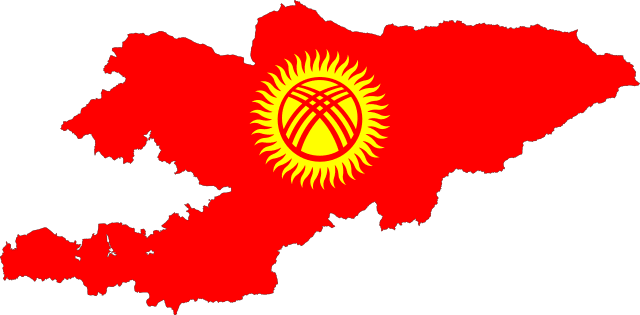
Brief History Of Kyrgyzstan
The Kyrgyzstan flag was widely influenced by other countries that had some kind of relationship with it (friendly or unfriendly). Turkic-speaking nomadic people first colonized Kyrgyzstan in about 201 BC. Islam took over as the area’s main religion in the 12th century. The majority of what is now the Kyrgyz Republic was populated by the Kyrgyz in the 15th and 16th centuries.
In 1876, the Russian Empire seized Kyrgyzstan. A large number of Kyrgyz people went to Afghanistan, the Pamir Mountains, or China.
Despite having been home to several autonomous tribes and clans for a very long time, Kyrgyzstan has occasionally been ruled by other nations. Finally, it managed to become a sovereign nation-state in 1991, following the dissolution of the Soviet Union.
Since gaining independence, the sovereign state has maintained its status as a unitary parliamentary republic, despite ongoing political unrest, ethnic unrest, uprisings, and economic difficulties. There are six million ethnic Kyrgyz living in the nation, with a sizable minority of Uzbeks and Russians.
Despite the fact that Russian is still widely used and an official language as a result of a century of Russification, Kyrgyz is closely connected to other Turkic languages. Muslims of all denominations make up the majority of the population.
History Of Kyrgyzstan Flag
The country’s initial flag was flown when Kyrgyzstan was still a part of the Soviet Union. It featured three horizontal stripes dividing a dark crimson area. While the other two were dark blue, the center dividing line was white. To symbolize the political connection between the people of Kyrgyzstan and the rest of the Soviet Union, the canton featured the crossed hammer and sickle of the Soviet Union in gold.
When the Soviet Union disintegrated at the turn of the 20th century, that flag was no longer in use. At that moment, Kyrgyzstan gained freedom, and the administration chose a new flag to symbolize the nation. The current national Kyrgyzstan flag was chosen by the country’s Supreme Council in 1992.
Following the declaration of the Kyrgyz Republic’s independence, a state contest and commission were established to select the national flag. Finally, more than 400 drawings were registered. The Kyrgyz Republic’s Decree No. 91, dated July 17, 2004, approved a new national emblem.
The first Kyrgyz tribal insignia were discovered in the Bulgarian Chronicles. According to the inscription, an old Kyrgyz pennant with ribbon embellishments had a red snake with wings fastened to the top of the gad. Therefore, Mahmud Kashgari’s “Divani Lugat-it-Turk,” written in the 11th century, validated that fact.
Each tribe’s heraldic emblems and colors are distinctive. The Kyrgyz people are divided into three major tribes. These are the Inner Tribes (red-colored flag), the Right Wing (flag color: blue), and the Left Wing (flag color: white).
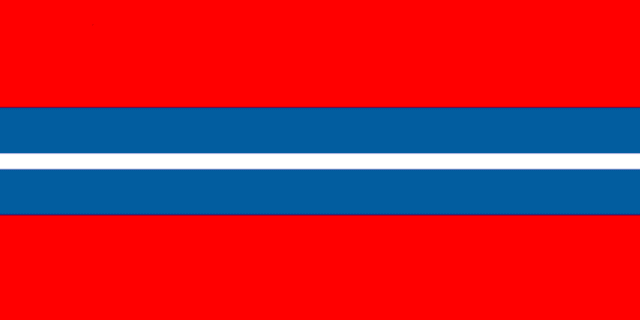
Design Of The Flag
The new Kyrgyzstan flag, which is still in use today, has a red background as well. Although it was said that this color came from a banner that Manas the Noble, a Kyrgyz national hero, had flown. A 40-rated yellow sun represents Manas’ followers.
The Epic of Manas, one of the finest literary masterpieces to emerge from Kyrgyzstan, is referenced by the forty rays that extend from the sun. The epic was oral poetry that described Manas uniting the Kyrgyz tribes and defeating numerous foreign foes.
Each of the flag’s rays is a representation of a tribe that Manas united, serving as both a reminder of the nation’s literary past and a sign of its togetherness. The tribes he unified sit in the center of the Kyrgyzstan flag, together with the additional symbols of light, nobility, and eternity.
A red and yellow insignia with two crossed sets of three lines each, all contained inside a ring, is displayed on that Sun. This is a stylized illustration of the yurt, the typical Kyrgyz home. The flag’s intricate symbolic meaning refers to the beginning of life, the unification of time and space, the history of the Kyrgyz people, solidarity, and the hearth and home.
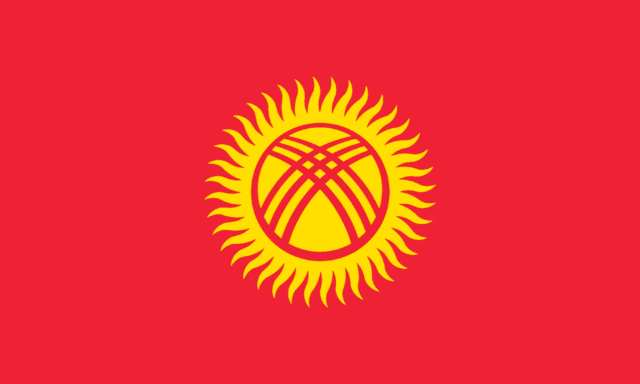
Kyrgyzstan Flag Symbolism
The first thing that you will see when looking at the Kyrgyzstan flag is the sun with 40 rays. One of the first natural symbols is the sun. The sun represents vitality, sacred energy, and everlasting life. A representation of the source of light, truth, knowledge, and wisdom is the sun’s light. Grace comes from the Sun.
The 40 rays represented the harmony of the 40 Kyrgyz tribes. The name “Kyrgyz,” which means “a gathering of forty tribes,” is derived from the Turkic word kirk, which means forty.
The yurt, often known as a “gray dwelling” or “Boz-Ui,” is a representation of Kyrgyz nomadic life. Topped by a nomad architect, the yurt represents the world, way of life, and philosophy of nomads. There is just one “window” to the universe on the yurt’s roundtop, which is shaped like the sun and moon. It serves as a guide to space, the universe, and life. This is for peace, a continuing life, and a family.
For ancient Kyrgyz, the color red had deep sacred significance. It represents fire, the sun, vitality, and life’s color. Perhaps the color red represents the danger of blood, but the Kyrgyz described it as the start of life. Red clothing and accessories are undoubtedly used frequently in daily life as a sign of luck and support as well as protection from the evil eye.
Kyrgyzstan Flag Alteration Proposal
A commission was recently set up to consider ideas for changing the flag’s design. The leader of this organization said that it functioned as a focal point for dispute and division and that the government did not want this national emblem to further polarize society.
Disagreements over how to interpret the symbols on the existing Kyrgyzstan flag contributed to some of this. For instance, ethnic diversity may be seen in contemporary Kyrgyzstan, where significant minority populations like Uzbeks (14.3%) and Dungans (1.1%) reside. These people were historically subjugated by Manas. Hence, some of them do not like the present flag, which was modeled after his military symbol.
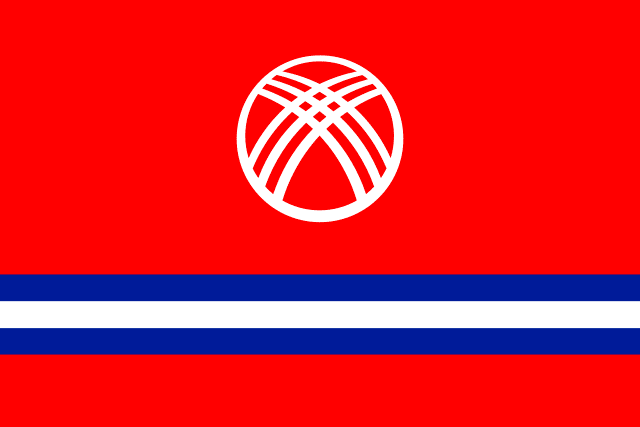
Kyrgyzstan Coat Of Arms
The Kyrgyz Republic’s national emblem was authorized on January 14, 1994, and has been recognized ever since. The Ak-Shumkar “Manas” falcon on the coat of arms depicts the state’s freedom, its people’s kindness and alertness, and the loftiest aspirations of those who live in the mountainous nation of Kyrgyzstan.
Additionally, Issyk-Kul Lake, Kyrgyzstan’s most priceless gem, is shown on the flag, encircled by the Ala-Lofty Too’s granite hills. The lake’s glassy surface represents the beauty of nature and the wellspring of all life and energy. The sun-lit mountains resemble the “kalpak,” the traditional cap of the Kyrgyz people.
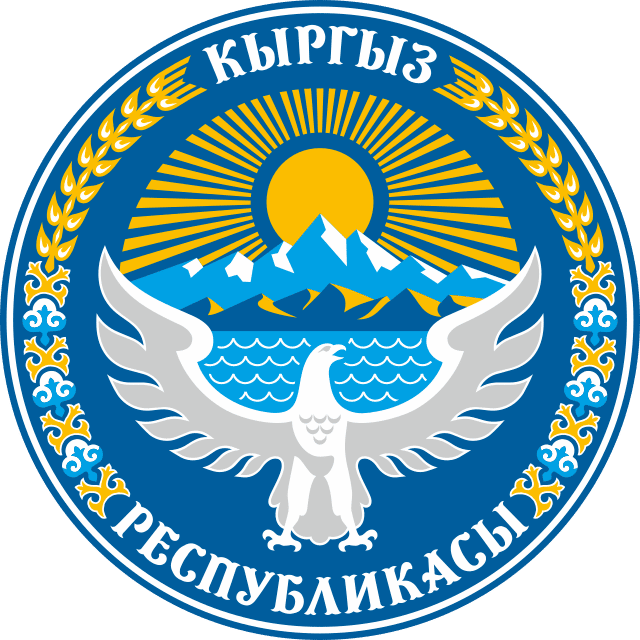
Bottom Line
Above in this article, we explored the Kyrgyzstan flag. The Supreme Council of Kyrgyzstan adopted the national flag on March 3, 1992. A bright sun with 40 evenly distributed rays sits in the middle of a crimson background. It is a perfect representation of the country’s nature, culture, history, and heritage.